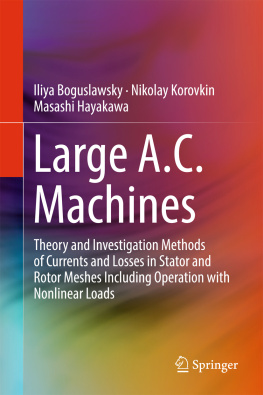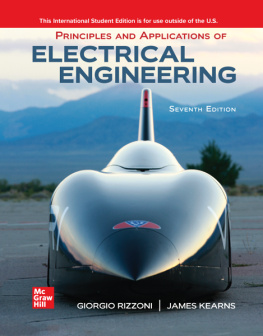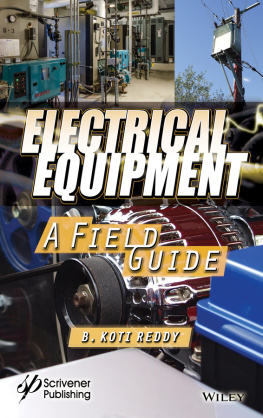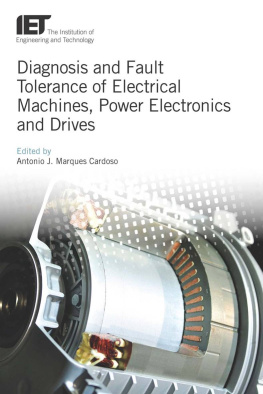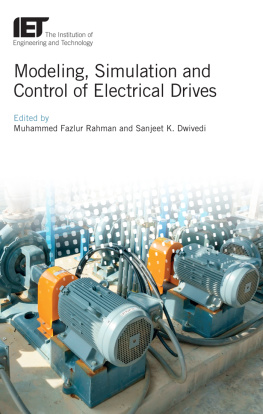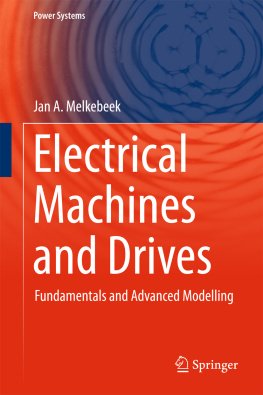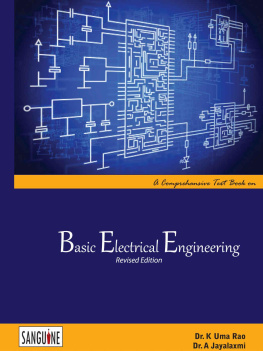1. Problems Formulation
1.1 Requirements to High-Power A.C. Motors and Generators
The main tendency in the creation of modern alternating current (A.C.) motors for various industries and generators for stationary and mobile power plants is growth of their technical and economic level by an increase in their electromagnetic, thermal loads, improvement of construction and production technique. This tendency is caused by the need to increase constantly machine competitiveness.
Modern induction and synchronous motors of industrial frequency find broad application in metallurgy, mining, cement, woodworking industry, transport and agriculture. Generally, in operation practice use is made of two groups of indicators for determination of their technical and economic level: indicators for operation in nominal (rated) mode and in start-up mode.
First group contains motor efficiency, ratio of its nominal (rated) torque to volume of active part, its weight, etc. The second contains motor characteristics: start-up current and torque, maximum and minimum torques, value of admissible dynamic moment of inertia of mechanism coupled with motor shaft; in practice, the value of this dynamic moment is often limited to opportunities of short-circuited winding of motor rotor (damper winding, squirrel cage).
However, with growth of electromagnetic and thermal level of motors and corresponding increase of technical and economic indicators of the first group, there can be problems with some indicators of the second groupwith motor torque at start-up, with its maximum torque, etc.; they can decrease negatively affecting motor competitiveness. We note that these indicators are determined considerably by construction and parameters of short-circuited rotor winding of motor (damper winding, squirrel cage), distribution of currents in the elements of this winding induced during its operation. Therefore, investigation of parameters of these windings and distribution of currents in their elements represents a practical interest.
For the determination of technical and economic level of modern generators for stationary and mobile power plants of industrial frequency, use is also made of two groups of indicators: indicators for operation in nominal mode and in transient mode.
The first group of indicators for generators and motors is similar. The second contains indicators defining, for example, the degree of dynamic stability of generators for operation in parallel with high-power network, and for generators of autonomous power plantspossibility of preset power induction motor start-up, extent of generator voltage drop at sudden load-on. This load has peculiarities: it differs at start-up by lowered values of power factor (cos = 0.30.4), etc.
However, with growth of electromagnetic and thermal level of generators there can be problems with some indicators of the second group that also negatively affect their competitiveness. These indicators at preset current load to a certain extent are also determined by parameters depending on the construction of generator rotor damper winding.
Modern frequency-controlled electric drives nowadays are widely introduced in those industries, which were traditional for uncontrolled electric drives or for D.C. electric drives used, for example, in metallurgy and shipbuilding. In operation practice, in order to determine technical and economic level of frequency-controlled motors of these electric drives use is made of the same characteristics in nominal mode, as for machines of industrial frequency, especially, if these motors are intended for operation in the modes with sharp load variation. However, current and voltage distortion factors caused by the frequency converter operation in armature circuit have an essential impact on these indicators; they are determined by higher time harmonics in current and voltage curves of this circuit. Fields of these higher time harmonics induce additional EMFs (electro-motive forces) and currents in loops of a frequency-controlled motor, including in its short-circuited winding (damper winding, squirrel cage), especially at sharp load variation. Therefore, physical processes in rotor loops of industrial frequency motor at start-up and frequency-controlled motors in nominal mode and at sharp load variation are similar.
However, unlike the short-term start-up mode of industrial frequency motors, these EMFs and currents are typical for continuous operation mode of frequency-controlled machines. These cause a number of additional physical processes in motor, for example, additional heating of rotor and stator loops in comparison with motor operation in linear networks. Respectively, motor admissible power fed from a frequency converter should be reduced in comparison with the power when fed from a linear network; this admissible power taking into account nonlinear distortion factors needs to be previously calculated and specified in delivery specifications. With growth of machine electromagnetic level, the additional currents, losses and additional heating can also increase in rotor loops (damper winding, squirrel cage). We note that these indicators are considerably determined (as at asynchronous start-up from network) by construction and parameters of short-circuited rotor winding of motor, distribution of currents in the elements of this winding induced during continuous operation. Therefore, investigation of parameters of short-circuited rotor windings, distribution of currents in their elements represents a practical interest for machines of this class.
Modern generators of stationary and mobile power plants are even more often used in nonlinear networks. In short-circuited loops of their rotors, there appear additional currents and heating; they are similar to additional currents which continuously appear in synchronous motors fed from frequency converters.
Let us note that higher time harmonics caused by stator stepped form, in particular in salient pole machines with a small number of slots per pole and phase as well as in double-fed machines (in generator mode) can result in network nonlinearity; application of known measures to decrease EMF nonlinear distortions for these machines in practice sometimes meet certain difficulties, especially for double-fed machines. Therefore, the solution of these problems represents a practical interest.
It is also necessary to note problems of winding MMF (magneto-motive force) determination at non-sinusoidal power supply, in particular, generallyin asymmetrical modes, and currents in winding phases vary in time under arbitrary periodic (not only harmonic) law, and the winding is implemented with a fractional number of slots per pole and phase so its phase zone width cannot be identical.
Thus, practice puts forward problems of profound studying processes arising in modern A.C. machines with short-circuited rotor loops for operation in a nonlinear network. Its purpose is a further increase in machine technical and economic indicators and their competitiveness.
For this purpose, refinement of investigation methods is necessary for operational characteristics of the following:
synchronous and induction motors (especially for operation from a network or from a frequency converter in heavy modes, for example, with variable load, etc.);

